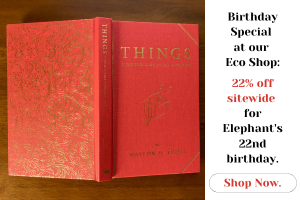View this post on Instagram
It was the first big family gathering for my husband and I in more than two years, and I escaped into a quiet hallway to breathe.
For a highly sensitive introvert, these breaks from social energy is necessary. It gives me the quiet I need to relax and get back in there. To me, being in a gathering—any gathering—is like entering unmapped, energetic river rapids, and sometimes, especially in family groups, I am clinging to the edge of a leaky boat with a broken paddle.
Families have patterns of reacting and responding to each other that is sometimes predictable, sometimes not. Our families of origin settle into grooves of exchanges with each other, which may be nourishing, or may be injuring, and often it all happens without anyone’s planning (most of it ancient habits, without conscious thought that maybe there is another way).
The easiest way for humans to connect is over-b*tching about something—weather, family, politics. “Me too,” we say, “I think, feel, believe the same!” Or maybe I don’t, and that gives us something else to b*tch about.
What if we bonded over sweet memories, loving remembrances, wonderment, and joy?
Maybe Grandma isn’t a b*tch; maybe she is just reacting from ancient habits of self-protection. Maybe she is saying things not from her heart, but from a deep base of fear or loss, feelings that never integrated, healed. I wonder how much of the patterns of things we say in families are exactly not who we are.
Or they are.
We just slide into those old grooves, too fearful of the seemingly gigantic effort it would take to change. And if you have ever confronted a family member with a boundary that you require, like “I know you have called me by this name for my whole life, but I want to be called (new name), and I am asking you to respect me in this way,” we all know there might be backlash in a scenario like this, “What? Your family given name isn’t good enough for you? Who do you think you are?” This is all so exhausting to contemplate, so we just let those ancient family records of speech and behavior play over and over, and then we go home and take a nap.
My favorite brother-in-law, another introvert, caught me in the hall and grinned, “Taking a meditation break?” I laughed, “Yep.” We have chatted about how introverts survive in family groups, and he is right; it always helps to feel you are not alone. I used to avoid gatherings as much as possible and drink to relax.
Now I am hoping to make healthier choices, and when I am escaping for a quiet moment, I am getting my feet on the ground, letting go of whatever records are playing in my head, and when I have that clarity, stability, and strength, I am ready to return to the group. While I used to put up walls to protect myself, now I raise and lower those walls so I can connect with people within my own safe boundaries. So how do you develop the resilience, hope, and patience to find that space for yourself and others?
If someone says to me, “Just breathe!” it probably doesn’t calm me down (most likely I get a little pissed off). I admit I say this phrase to myself sometimes in the midst of a stress tornado as I doom-scroll about the state of the world.
If you are like me, a gentle reminder that breathing mindfully maybe helps you slow down and breathe for a minute or so, but does it get you to a place of healing, where you feel the effects days or weeks later?
No?
Patience with a simple practice like mindful breathing goes against everything we’ve been taught—that we can “figure it out,” or just “work harder,” or “stay busy,” or “just don’t think about it,” and all those things can certainly keep a mind occupied, maybe even feel soothing in the moment.
But they do nothing to heal us. And we—irritable hurting humans that we are—need that healing now more than ever.
So whadddya say? Ready to start a regular mindful breath practice? Mental/emotional/spirit hygiene? Just as it wouldn’t do much good to only brush your teeth once a year before you go the dentist, occasional dips into meditation do some good, but the high stress/post-traumatic stress disorder (PTSD) world we live in requires something more. We can’t just “not think about it” when it comes to the world as we know it. We swim in a marinade of loss, grief, worry, negativity, and fatalism. As Einstein so wisely shared, “The thinking that created a problem can’t be the thinking that solves a problem.” A daily meditation practice just might be the thing—no side effects, free, and no tools required. So simple it is easy to dismiss—but powerful.
According to Psychology Today, medical researcher Howard Benson found, “Individuals who practiced regular meditation had changes in 172 genes that regulate everything from inflammation and glucose metabolism to blood pressure and even circadian rhythms.”
Breathing in a mindful way causes your genes to change. Let that sink in. The New York Times reported on Dr. Kris Streater, a neurobiologist, who ran a daily meditative breath practice study and found, “After 12 weeks of daily yoga and coherent breathing, the subjects’ depressive symptoms significantly decreased and their levels of gamma-aminobutyric acid, a brain chemical that has calming and anti-anxiety effects, had increased.”
So a mindful breath practice can change your genes, alter your brain chemistry, build mental and emotional resilience, and promote body and mind healing.
It can literally save your life.
I remember a counselor years ago suggesting a daily 15-minute, mindful breath practice. I was struggling with depression and anxiety and hoping to embrace non-pharmaceutical solutions. I was raised in a conservative religion that equated daily individual and family prayer as a measure of righteousness, so my counselor’s suggestion caused that queasy feeling in my gut, just a tad of ancient shame/blame.
When you reject a religion, it’s a tough thing to accept the power of a quiet meditative turning in and not see it as Me, The Sinner, in “Need of Salvation.” I realize I may have just alienated readers, so forgive me—and if you are still reading, you may agree that we all find our path to mental, physical, and emotional health, in whatever way we can.
I met with this counselor weekly; we spent a few minutes breathing quietly together. During the meditation, I snuck a peek at him a few times to see if he was focused on breathing, and sure enough, every time I looked up, he always had that still, still way of being, never looking up to see my peeking. I felt a little weird breathing with just one other person in the room, especially when the three-ring circus in my head, “Did I lock the car? Where is the duct tape? If the garage was clean, I’d know where the duct tape was…oh, geez, there I go again. I am a terrible meditator. Why am I here?”
And so on and so on, so loud in my head I was afraid my counselor could hear all that racket. No still mind for me, and my body was having a hard time sitting still as well. Finally, after a painful five minutes, he looked up and smiled, “Don’t worry if it seems difficult at first, everyone struggles with still meditation, that’s why there are so many guided voice and music meditations out there. This simple practice, as you increase the time each week, does more for the healing of your mind and nervous system than a bucketful of pills. Just keep turning your attention to your breath, to the center of your gut, to sensation. Trust me.”
I wanted to trust him, but it felt really impossible.
He asked me a few questions about my week, listened to my grievances, and as our time was up, looked me straight in the eyes and said, “No music, no candles, no incense—just focus on your breath, every day. This is the way to bring healing to your mind. You want more peace, right?”
I nodded, who didn’t want more peace?
“Okay, then, keep at it. Especially the days you don’t want to.” He opened the door for me, and as I headed down the stairs, I sighed, thinking I stink at breathing; I can’t even focus with my therapist breathing with me, how am I supposed to sit still at home with a TV in the room and ice cream in the fridge?”
If you feel like I did—to just sit and do nothing but breathe for any length of time sounds impossible—dear, dear reader, let me offer three tips to make this doable for anyone, really, absolutely everyone (including you):
1. Make friends with your nervous system.
Your survival instincts, that deep instinctual part of you, wants patterns—craves them! It demands that basically. When you are living in stress (every day now), you keep to the same patterns all the time (less threat that way). It’s that—devil that you know is better than the devil that you don’t—mindset. In fact, as you read this, you may already have entertained a dozen thoughts of why a breath practice doesn’t work for you. Be kind to yourself, and remember, that’s your stress response talking.
Anything new, even a healthy habit, will kick up a feeling of threat. When it does, you will feel a bit panicky; you might think, “Oh God, no, I can’t start up something else! I am so busy now, how can I? I don’t have enough (time, money, ability—fill in the blank) to do this!”
Then we go back to our daily habits of coffee, Insta scrolling, getting booked and busy with stuff, and forget all about the breathing. The stress response quiets down because our survival brain doesn’t give a fig about long-term health and well-being; it only cares that you survive the next heartbeat.
So take a deep breath, slowly exhale, try a little acupressure to calm your nervous system. Cup one hand’s fingers around your ear, touching the sides of your head, allow your pinkie finger to rest at your temple, maybe your thumb is under your ear along your neck or jaw line. You are touching acupressure points to calm the stress response. Bring your other thumb first and second fingers together in a triad and gently touch the notch at the center of your throat where your collar bones meet. Breathe for one to three minutes in this gentle acupressure hold, all designed to calm your brain. Relax your hands and notice how you feel.
If thoughts are still racing, use all four fingers of each hand to tap on your cheekbones, just under your eyes, breathe, then just below your collarbones on your upper chest, keep breathing as you tap down your sides, all the way down the sides of your thighs. Notice if your stress feels lessened. Rub your palms together and place your warm palms over your eyes, fingers gently resting on your forehead, thumbs at your temples, breathe, and try to keep those stressed thoughts in your brain. Chances are, as blood is attracted by your hands to your forebrain, energy to the survival brain will continue to melt away. Then when you start to feel a bit more relaxed, commit to a daily breath practice. Be your own cheerleader. You got this!
2. Baby step it.
Habit stacking is adding a new habit into an already existing habit to make it more acceptable and easier to integrate. Stretching a new habit too far by taking a giant step like an unreachable, “I will meditate three hours a day, every day!” is destined to fail. The ego wants to achieve, to succeed, to move on to the next goal.
Baby steps, like starting a daily breath practice with five minutes a day, maybe just as you sit up in bed each morning, then 10 to 12 minutes the next week, and so on, invites this new habit to become an integral part of life. This slow and steady approach is also making friends with our stress response, helping us to build resilience in the face of difficulty. And difficulty will come, or sickness, or not sleeping well one night, so you decide not to get up and breathe. Remember, the stress response with its instantaneous fight/flight/freeze mechanism in kahoots with the ego that doesn’t want to fail are working against us.
But your health, well-being, ease, and peace are at stake here—more than ever. And there is always the opportunity for a fresh start: five minutes as you sit, spine long, belly soft, eyes softly open, gaze toward the floor, or closed eyes, hands on thighs, or heart or belly—what feels most safe, most grounding to you.
Once you have an upright posture that works for you, take a deep breath, and let your focus keep returning to the sensations in the body. Find that space between loneliness and boredom, between wishing and wanting, between irritation and fear, and give the gift of spaciousness, grace, healing. It won’t be easy at first, a million thoughts will dive in, but we can have a refreshing attitude of patience and treat ourselves with kindness—which brings us to step three.
3. Make it a ritual.
We are more likely to keep at a habit if we make it special—whatever that is. You may create a whole altar to help you focus, or you may just sit in the same corner of the room each morning; I do suggest morning mindful breath before starting up your cellphone or computer to build up your calm and ease before the news of the world takes it away.
Maybe have a candle you light, or a cup of tea you sit down with each time. If you have something to focus your gaze, you are more likely to return to the breath and not be distracted. Some practitioners suggest eyes open, to train the mind to be centered in the world; others suggest closing the eyes.
Sometimes I close my eyes, sometimes I focus on the candle; I pay attention to the state of my thinking when I sit down, notice what might help me to center, and stay grounded. I get a drink of water, stretch a bit, maybe step outside for a big breath of air, then I sit. If I really have trouble returning to the feel of the breath, I might do some yoga or go for a mindful walk. Maybe fewer minutes, just for today. Tomorrow, I will resume my goal. Be kind, be patient. This is subtle but powerful work you are doing.
As you build this practice, you will find ways to deepen your awareness and let go of judgement. This is not about getting rid of thoughts; it is about changing our relationship to our thoughts, reactions, and feelings.
There is no perfect or right way to mindfully breathe, and remembering that each time you notice your wandering mind has gone off again, and with gentle patience return your focus to your breath, feeling the rise and fall of your body, you are creating healing conditions in your mind, body, and heart. This resilience training teaches the brain new rhythms, so when we encounter a new rock in the road of life, it isn’t a catastrophe; it’s just a rock, and we begin to feel, more and more, the ease, peace, and space to respond mindfully.
Thich Nhat Hanh, beloved writer and Buddhist teacher wrote, “Gather those mindful healing moments drop by drop, building a sea of loving compassion for ourselves, flowing with greater health, vitality, and peace.”
We are in this boat of life together; we can help each other respond to life with grace, breath by breath.
~







Read 2 comments and reply